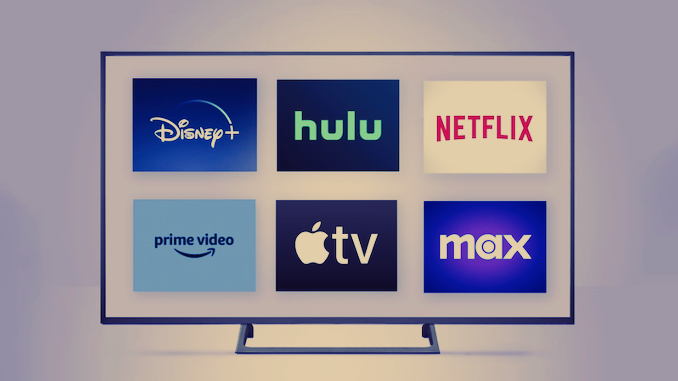Chasing Netflix: How the Major Media Companies Stack Up in Subscribers, Revenue, and Challenges [Part Two]

Netflix Remains the Reigning Streaming Juggernaut
Netflix remains the dominant player in the streaming industry, boasting 277.65 million global subscribers and leading in average revenue per user (ARPU). In its most recent quarter, Netflix added 8.05 million subscribers, marking a 16.5% year-over-year growth, further cementing its position as the industry leader.
Despite fierce competition from legacy media companies and tech-driven newcomers, Netflix has maintained its top spot. Still, recent strategic shifts indicate the company recognizes that growth alone is no longer enough to ensure dominance.
In 2023, Netflix increased its revenue by 7% and expanded its operating margin to 21%. The company’s efforts to crack down on password sharing and introduction a more affordable, ad-supported plan have helped bolster its subscriber base, adding over 29.5 million new members.
As Netflix pivots its focus toward profitability and engagement, its U.S. and Canada ARPU stands at $17.77, well ahead of its competitors. However, international markets remain challenging, with ARPU significantly lower in regions like Asia-Pacific, which averages $7.17. The company’s introduction of an ad-supported tier, now responsible for more than 45% of sign-ups in the 12 countries where it is available, is part of Netflix’s strategy to address these international disparities.
Netflix’s Shifting Strategies and Value Perception Challenges
Although Netflix remains the leading streaming service, the company is adapting its strategy for long-term success. Netflix aims to diversify its revenue streams by expanding into new areas, such as video games and live events, and enhancing user experiences through improved ad offerings.
Netflix recently announced that it will no longer disclose quarterly subscriber numbers, shifting its focus to metrics like revenue growth, operating margins, and engagement—a clear signal of its changing priorities as it looks to the future.
However, Netflix faces challenges with its value perception. In 2023, the platform encountered a more challenging operating environment due to its crackdown on account sharing and its push into gaming.
According to Whip Media’s 2023 U.S. Streaming Satisfaction Survey, customer satisfaction has dropped for the second consecutive year, with ratings falling by 3 points in 2023 and 13 points since 2021. More importantly, Netflix’s dominance in the “indispensability” category, where users are asked which streaming service they would keep if they could only have one, has weakened. In 2023, only 27% of respondents chose Netflix, down from 41% in 2021.
While Netflix remains the most indispensable service, the margin between it and its competitors continues to shrink, reflecting growing competition and changing consumer preferences.
The Role of Advertising in Streaming Profitability
One of the most significant trends shaping the streaming industry is the growing role of advertising in driving profitability. As platforms like Netflix, Disney+, and Hulu have introduced ad-supported tiers, they have created new revenue streams that help offset the costs of content production and acquisition. Advertising also allows these platforms to offer lower-priced tiers, attracting more price-sensitive consumers.
Netflix’s ad-supported tier, which now accounts for 45% of sign-ups in the countries where it is available, has been a critical factor in its continued subscriber growth. Similarly, Disney+ and Hulu have benefited from higher ARPU driven by ad revenue, as subscription growth has slowed in several markets.
According to Whip Media, 30% of subscribers said they plan to spend less, and 52% said canceling their service(s) indefinitely or temporarily was the most common action, respectively. Notably, 37% said they would use more free streaming services, also known as FAST channels, an accelerating global trend in how audiences consume media. The FAST market is growing almost three times faster than the SVOD market.
However, the transition to an ad-supported model is not without challenges. Platforms must strike a balance between maintaining a premium viewing experience and maximizing ad revenue. Too many ads could alienate subscribers, leading to higher churn rates, while too few ads limit the profitability of the ad-supported tiers.
Password-Sharing Crackdowns: A Necessary Evil?
As streaming platforms grapple with profitability, many have turned their attention to password-sharing as a potential revenue drain. Netflix, Disney+, and Hulu have all implemented measures to crack down on password-sharing, arguing that unauthorized sharing costs the platforms billions in lost revenue.
While password-sharing crackdowns are likely to increase revenue in the short term, they also risk alienating subscribers accustomed to sharing their accounts with friends and family. Platforms must tread carefully, as aggressive crackdowns could lead to higher churn rates and negative public sentiment.
Source:filmtake

熱門頭條新聞
- Slow-Motion Collapse: How Nostalgia, Streaming, and Short-Sightedness Undermined Hollywood’s Future
- PBS NOVA / GBH JOINS THE PRODUCTION OF ZED AND ARTE’S PREMIUM DOCUMENTARY THE LOST TOMBS OF NOTRE-DAME
- Biopunk Action Title Sonokuni Launching Early 2025
- LifeAfter Season 7 “The Heronville Mystery” Brings a Brand New Folklore Horror Theme for a Unique Survival Experience
- 2024 Developer Showcase and look ahead to 2025
- Jumping Jazz Cats will launch on PC January 30th
- Lexar Announces Two Portable SSDs
- Quell Announces Hit Game Shardfall is Coming to VR
